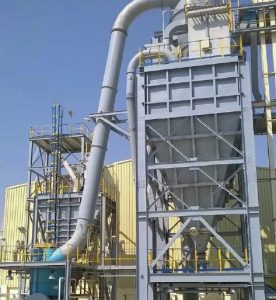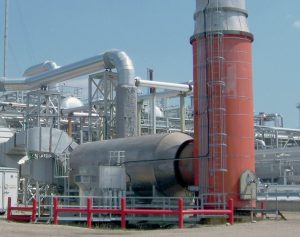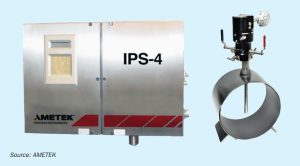
Rotary coolers: the key to superior fertilizer cooling
Rotary coolers remain a popular choice with fertilizer producers, explains Shane Le Capitaine of FEECO International, thanks to their ability to meet the industry’s rigorous demands.

Rotary coolers remain a popular choice with fertilizer producers, explains Shane Le Capitaine of FEECO International, thanks to their ability to meet the industry’s rigorous demands.

Igor Makarenko of Solex Thermal Science reviews the main equipment options for fertilizer cooling and their relative merits.

Ian Hancock, Vice President Sales and Operations, Bradley Pulverizer Company, offers expert advice on how to reduce wear during phosphate size reduction.

MOPCO has selected thyssenkrupp Uhde to supply advanced technology for its Damietta ammonia-urea complex in Egypt.

Fertilizer International presents a global round-up of phosphate rock, phosphoric acid and finished phosphates projects.

Days 2 and 3 of the CRU’s 38th Nitrogen+Syngas 2025 Expoconference turned to the technical sessions, organised in three parallel streams covering: green ammonia technology, nitric acid and ammonium nitrate, plant operations and reliability, urea technology, digitalisation, carbon capture, emissions reduction and sustainable fertilizer production, and fertilizer finishing.

In Part 4 of this series on stripper efficiency issues, we continue to look at the causes of lower stripper efficiency with a discussion on the high delta-P range of liquid dividers.

The production of urea, a critical component in the fertilizer industry, involves highly corrosive environments, particularly in the high-pressure sections of the process. This necessitates the use of advanced materials that can withstand such aggressive conditions to ensure long life and efficiency of urea production plants. Alleima, Stamicarbon, Saipem and TOYO report on their advanced material and equipment solutions for the urea industry.

The 2030 greenhouse gas emission reduction goals in the European Union are driving oil and gas producers to reduce CO2 emissions wherever possible. This extends to even the incinerator attached to a sulphur recovery unit (SRU). In this article Sulphur Experts review the role of the incinerator, how the three most common European TGUs each affect the demand on the incinerator itself, and the potential reduction in CO2 emissions for a generic facility of each type.

The development and implementation of modern process instruments and control systems in sulphur recovery units has increased significantly over the last decade. In this article, the impact of BTEX on sulphur plant operations and how the BTEX concentrations can be measured are discussed.